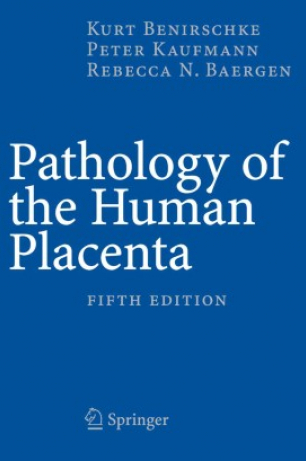
Pathology of the Human Placenta
Publication year: 2006
: 978-0-387-26742-5
Most obstetricians and pediatricians would agree that the examination of the placenta often helps to explain an abnormal neona tal outcome. As early as in 1892, Ballantyne wrote, A diseased foetus without its placenta is an imperfect specimen, and a description of a foetal malady, unless accompanied by a notice of the placental condition, is incomplete. Deductions drawn from such a case cannot be considered as conc- sive, for in the missing placenta or cord may have existed the cause of the disease and death. During intrauterine life the foetus, the membranes, the cord and the placenta form an organic whole, and disease of any part must react upon and affect the others. Similar thoughts were succinctly detailed in Price’s (1950) discussion of his concept of the prenatal biases as they affected twins. His contribution also admonishes us that placental study is a sine qua non for a more perfect understanding of fetal development. Despite all this understanding of the past and appreciation for plac- tal disease, great resistance still exists to perform the task of placental examination routinely. For many pathologists, therefore, the placenta has remained a mysterious organ.
: Medicine, genetics, molecular biology, pathology, placenta